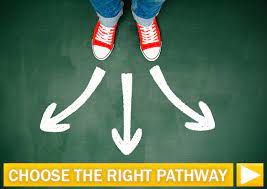|
THE DIRECTION OF HAPPINESS
Awakening to, and understanding the simplicity of, eastern practices over the complexity of western sciences are a journey forever filled, and my passion in life. I hold a great deal of gratitude toward my clients who are open to learning, as I invite them to pause and unpack the knowledge to be found in the practices I share. Practices such as the Neijing Tu 內經圖, Understanding the microcosm of Self in the macrocosm of the universe. Over these past five years in the USA, my clients have been my lantern. They have proven to me that when someone is prepared to do the work, life definitely changes for the better, not just for Self but also for our family, friends, colleagues, and for those whose lives we connect with along the journey. EASTERN PRACTICES If eastern practices sound a little too woo-woo for you, allow me to offer you a taste in western mindset terms (through some of the studies I have undertaken; the teachings of Otto Rank, Kierkegaard, Carl Yung, and Rudolph Otto from who are among many of the great names of western science teachers I have enjoyed learning) Where do we start? Let’s unpack, and simplify, some of the western teachings that offer an answer toward The Meaning Of Life, or perhaps the question “Who am I”? THE MEANING OF LIFE, OR, WHO AM I? Through eastern practices one can unpack Metaphysics (Ontology), Psychoanalysis (Individuation), Agape (Greco-Christian term referring to unconditional love), Eros (Sensual or passionate love), and Uroboros (Ancient Egyptian iconography). We start by recognizing that there are two parts to the Self. 1.A part that knows I am not perfect 2.A part that wants to be perfect Therefore there is a dichotomy at play, and a conundrum associated with the dichotomy. We strive to be perfect, or at least attempt to create perfection through attaining something externally (in the form of recognition or validation from others), through developing a fortress of strength surrounding the Self (financial freedom/success in business/ success in life). The actions we take assist evolution, yet we crave the ultimate goal of achieving IT (the goal of life), which in fact goes against the universal requirement of imperfection for evolution to continue. If we achieve IT (the goal of life) we no longer need to evolve. If we no longer evolve, the universe becomes stagnant. The universe therefore relies upon us to recognize the necessity to remain imperfect. This scenario creates a never-ending suffering, until we are aware that it is desire itself (for recognition) that creates the suffering. While we continue to look externally for validation of our existence, and misguidedly believe this external validation, or recognition, is only achieved through appearing to be successful in life (I call this our desire for heroic greatness) we shall suffer. In western terms this is the action of transference (seeking recognition externally), and is present due to the ceaseless desire for recognition of Self, through the eyes of other-than-self. THE TIMELINE There appears to be a Timeline Of Transference: Seeking acceptance & recognition from:
However, when we pause and recognize that it is this external pursuit of happiness (achieving the goal of life) that is responsible for (or the cause of) the problems we experience in life, we can see that we create the suffering ourselves. THE ANSWER TO THE CESSATION OF SUFFERING: By learning the internal path of acceptance & recognition, we cure our suffering. We learn to focus our attention internally, by recognizing the full physical & spiritual existence of what makes up this thing called Self. It is through the practices of awareness of Self that the riddle begins to be solved. We cease using external physical transference, as we develop the knowledge of universal oneness (we are a part of the universe, not separate to it) or (we are a part of God, not separate to it). Through the practices of self-awareness we begin to witness that we are contributing toward the existence of the universe itself (or God) by developing the individual Self. We begin to understand that it is essential to be perfectly imperfect; and therefore we cease seeking validation from the external objects of transference from which we have been seeking validation. The imperfections, or our inadequacies, are a necessity for growth, rather than an obstacle toward it. We start to recognize the Self in its entirety; the good, the bad, and the ugly all exist in each and every one of us, and therefore we are not imperfect – we are being given an opportunity to live and witness the matrix of potentiality (the opportunity to move toward whatever we choose to move toward in life) through the continuation of the cycle of evolution, by being perfectly imperfect. THE SIMPLICITY In learning that your role is to be who you are (in each and every changing moment), one ultimately recognizes it is the journey of uncertainty that brings us joy, not the destination of certainty. Simply put, as your journey unfolds before you, “Your job is to be you”.
0 Comments
|
Archives
June 2024
Categories
|

 RSS Feed
RSS Feed